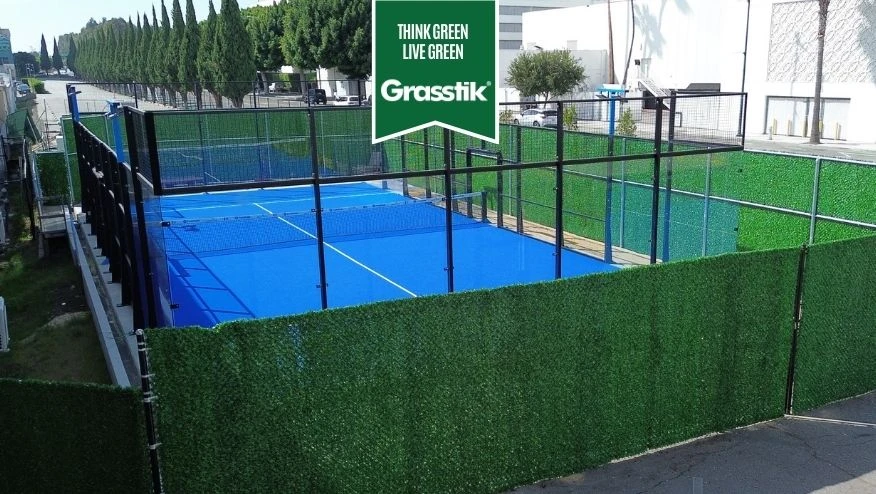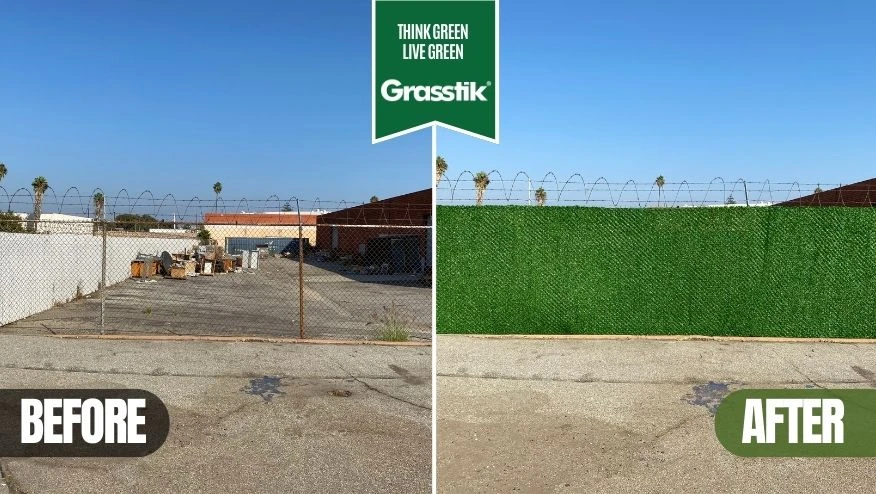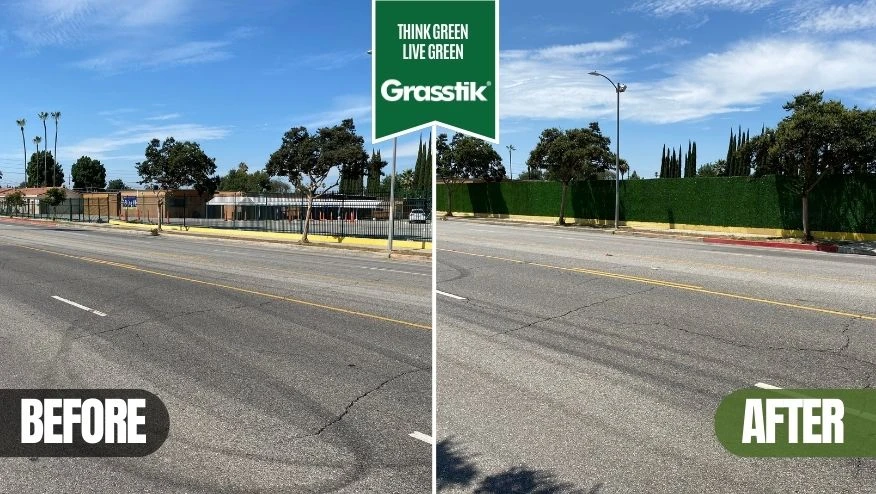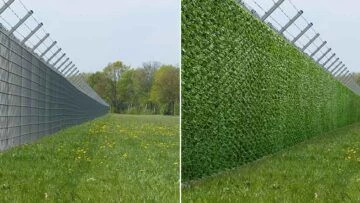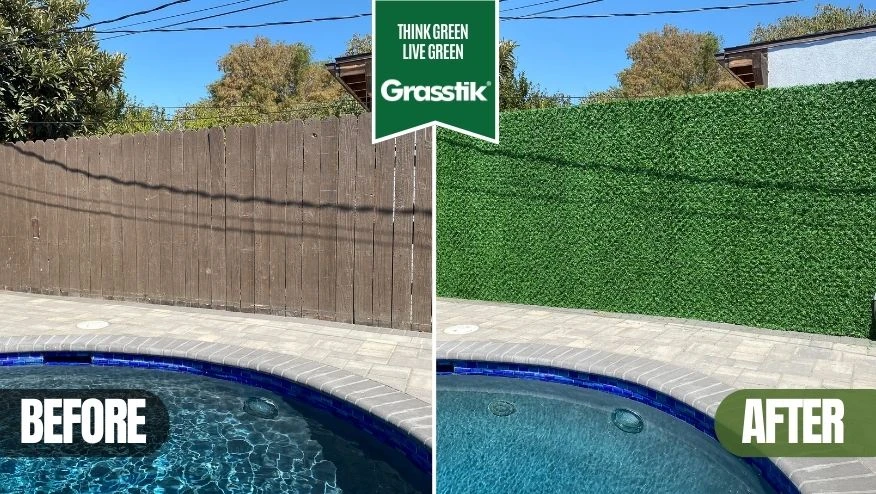
Wooden privacy fence panels are a popular choice for homeowners looking to enhance the privacy and aesthetics of their outdoor spaces. These panels are typically made from wood fence slats joined together to form a solid barrier, providing a high level of privacy from neighbors and passersby. Wooden privacy fence panels are versatile, easily customizable to fit various heights and styles, and can be painted or stained to match any exterior decor. They not only offer privacy but also add a touch of natural beauty to your property, making them an ideal solution for those seeking both functionality and aesthetic appeal in their fencing options.
How to Build a Privacy Fence with Wood Panels
Constructing a grass fence with wood panels can significantly change the feel of your outdoor area, providing a secluded retreat for you and your family. Here is a step-by-step guide:
- Plan your fence layout: Accurately measure the intended fence area to determine how many panels you will need. For example, if your yard is one hundred feet in perimeter and each panel is 8 feet wide, you'll need 13 panels, considering a little extra for gate installation or adjustments.
- Set the posts: Dig holes for your posts at intervals matching your panel width, typically 8 feet. Use concrete to anchor the posts, ensuring they are level and properly spaced.
- Attach the panels: Secure the wood fence panels privacy to the posts with screws or nails, making sure each panel is level before moving on to the next. This step is crucial for maintaining a uniform look and ensuring privacy.
- Final additions: Protect and beautify your fence by applying a coat of paint or stain. This not only extends the life of your fence but also gives it a finished look that complements your outdoor space.
How to Install Wood Fence Panels
Installing wood fence panels is an efficient way to quickly enhance your property's privacy and aesthetic value.
- Prepare the area: Ensure the fence line is clear of debris and the ground is level. This preparation ensures a smooth installation process and prevents future issues with alignment.
- Set the fence posts: Properly align and space the posts to accommodate your panels. This alignment is key to ensuring that the panels fit securely, and the fence looks straight and professional.
- Attach the panels: Fasten the wood panel privacy fence to the posts using brackets for added stability. This step is vital for creating a durable fence that can withstand the elements and provide lasting privacy.
- Ensure stability: After installation, check each panel for stability. This step ensures that your fence will remain secure and upright, providing reliable privacy for years to come.
How to Attach Wood Panels to Chain Link Fence
Transforming a chain link fence into a privacy fence with wood panels is an affordable and effective way to enhance backyard privacy.
- Measure and cut: Determine the height and width of your chain link fence to cut the wood panels accordingly. This precise measurement ensures a snug fit, enhancing the overall appearance and effectiveness of the privacy barrier.
- Secure panels: Attaching the panels with wire ties or U-clips ensures they remain in place, even in windy conditions. This attachment method is straightforward and reliable, providing immediate privacy improvement.
- Check for stability: Regularly inspect each panel to ensure its securely attached, adjusting as necessary to maintain privacy and durability. This ongoing maintenance is key to sustaining the fence's effectiveness and appearance.
Can You Attach Wood Fence Panels to Metal Posts
Attaching wood fencing panels to metal posts combines the aesthetic appeal of wood with the durability of metal, offering a long-lasting fencing solution.
- Use brackets: Metal brackets specifically designed for this purpose ensure a stable and secure attachment. This method allows for easy installation and provides a strong foundation for your fence.
- Secure the panels: Fastening the privacy panel wood to the brackets with screws guarantees a secure, long-term attachment. This combination of materials ensures that your fence can withstand various weather conditions and remain sturdy over time.
- Ensure a secure fit: Regular checks and adjustments keep the fence stable and maintain its privacy function. This proactive approach helps to prevent any potential issues and ensures the longevity of your fence.
How to Connect Wood Fence Panels
Creating continuous and stable wood fence panels involves properly connecting each panel to the next.
- Use post brackets: Brackets not only make the connection process easier but also strengthen the overall structure of the fence. This added stability is crucial for withstanding weather conditions and maintaining privacy.
- Align the panels: Proper alignment ensures that the fence appears straight and uniform, enhancing both its functionality and curb appeal. This precision is essential for achieving a professional-looking fence.
- Secure the connection: Using screws or nails to attach the panels to the brackets ensures a durable connection that will last through various conditions. This secure attachment is key to the fence's integrity and longevity.
How to Clean Wooden Fence Panels
Regular maintenance of your wood privacy fence panels is essential to preserve their appearance and longevity.
- Remove dirt and debris: A soft brush can effectively clean off surface dirt without damaging the wood. This simple step prevents buildup that can lead to wear over time.
- Apply a cleaner: A wood cleaner or a mild detergent solution can remove tougher stains and discoloration. This cleaning process helps to restore the natural beauty of the wood.
- Rinse thoroughly: A thorough rinse with a garden hose removes any residue, preparing the wood for sealing. This step ensures that the sealant will adhere properly, offering better protection.
- Apply a protective sealant: A sealant protects the wood from moisture, UV rays, and other environmental factors. This protection is crucial for extending the life of your fence and keeping it looking great.
How Many Fence Pickets Do I Need for a Fence
Calculating the number of fence pickets required for your project is an essential planning step.
- Measure the perimeter: Knowing the total length of the area to be fenced helps determine the quantity of materials needed. For example, a 100-foot perimeter requires careful calculation to ensure coverage.
- Picket spacing: Deciding on the spacing between each picket affects privacy and material needs. Closer spacing offers more privacy but requires more wood pickets.
- Calculate pickets needed: Considering the width of each picket and your chosen spacing, calculate the total needed. This calculation ensures you have enough materials to complete your fence without interruptions.
- Consider extra for waste: Purchasing additional pickets accounts for any cutting or fitting adjustments. This foresight prevents delays and ensures you have enough materials to achieve a professional finish.
Incorporating these elements into your fencing project will ensure a durable, attractive, and private outdoor space. Using grass fence panels effectively enhances the security and beauty of your property, making it a peaceful retreat for you and your family.

